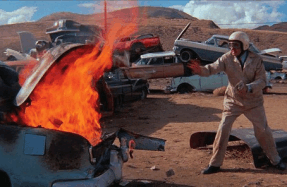
It’s not immediately clear who the protagonist of James Vaughan’s debut feature is. Following the credits, which play over a montage of 18th-century artist William Bradley’s watercolours of English ships docking in Sydney (the settlement’s first representation in Western art), we are shown a sunny park on the edge of Sydney’s harbour, where stray figures gaze out at the glittering water as if they’re in Georges Seurat’s A Sunday on La Grande Jatte. It’s a scene in which it would be difficult to recognize the lanky Ray (Fergus Wilson), his features indistinct in the middle distance, as the anchor of any forthcoming narrative, and that subtle sense of rootlessness continues as Vaughan proceeds to cut to the skyscrapers and eerily underpopulated streets of Brisbane.
That initial sensation of displacement does turn out to be central goes on to trace the uncertain flirtation (if one could even call it that) between Ray and Alice (Emma Diaz), acquaintances from Sydney who unexpectedly bump into each other in Brisbane. But the film’s understated opening sequence, bringing us from watercolour to harbour to cityscape, establishes a crucial national subtext. As these characters go about their lives, they move through spaces that are indelibly marked by the lineage of colonial violence: in the statues of soldiers throughout Sydney, in throwaway shots of images of the British royal family on cheesy souvenir mugs, and especially in the pavement underfoot, which covers the ground on which tens of thousands of Aboriginal Australians lost their lives at the hands of European settlers. (The history of the country’s indigenous peoples is only mentioned once in the film, by a tourist.)






